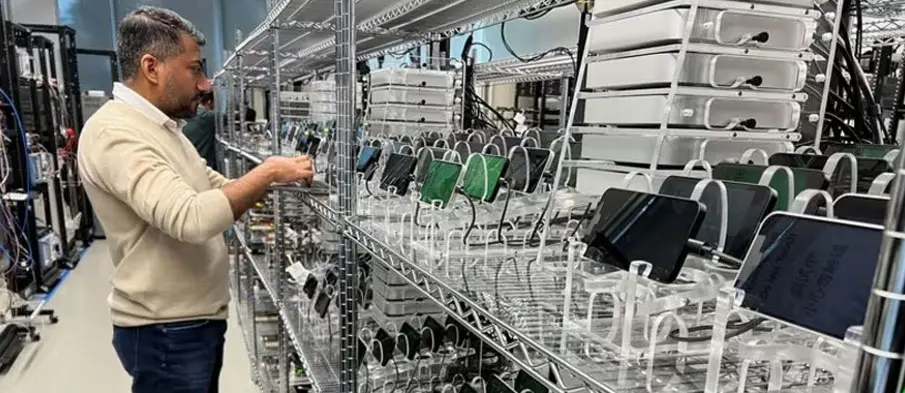
Apple (AAPL.O) has introduced its first custom-designed modem chip, marking a significant step in reducing its dependence on Qualcomm (QCOM.O) for wireless connectivity in iPhones. The new modem, a key component of Apple’s C1 subsystem, will debut in the $599 iPhone 16e. Apple executives indicated that these chips will eventually be integrated across the company’s product lineup but did not specify a timeline.
The C1 subsystem, which includes essential elements like processors and memory, enhances efficiency and performance. According to Kaiann Drance, Apple’s vice president of iPhone product marketing, the iPhone 16e will have the best battery life among Apple’s 6.1-inch devices, thanks to the C1 system. The device will also support Apple’s latest AI-driven features.
Developing modem chips is a complex task due to the need for compatibility with a vast number of carriers across different countries. Companies like Samsung Electronics (005930.KS), MediaTek (2454.TW), and Huawei Technologies (HWT.UL) have successfully built such chips, while Apple previously relied solely on Qualcomm. After a lengthy legal dispute, Apple settled with Qualcomm in 2019 and entered new supply agreements when Intel (INTC.O) failed to deliver a suitable alternative. Now, Apple is confident that its new modem will serve as the foundation of its future connectivity platform.
Advanced Technology and Global Compatibility
Apple’s senior vice president of hardware technologies, Johny Srouji, described the C1 subsystem as the company’s most intricate technology to date. The system includes a baseband modem manufactured using advanced 4-nanometer technology and a transceiver built on 7-nanometer technology. To ensure seamless global connectivity, Apple tested the chip with 180 carriers across 55 countries.
“We build a platform for generations,” Srouji said. “C1 is the start, and we’re going to keep improving that technology each generation, so that it becomes a platform for us that will be used to truly differentiate this technology for our products.”
One of the key advantages of the C1 is its deep integration with Apple’s processor chips. According to Arun Mathias, Apple’s vice president for wireless software, this integration allows the iPhone to prioritize data traffic in congested networks, improving responsiveness. Additionally, the C1 features custom GPS and satellite connectivity for use in areas without mobile networks. However, it does not yet support millimetre-wave 5G technology, an area where Qualcomm remains dominant. Apple has not disclosed when it plans to introduce this capability or how quickly it will transition away from Qualcomm’s chips.
Qualcomm executives have projected that Apple’s reliance on its modems will decline from 100% to as low as 20% by next year. However, Qualcomm retains a licensing agreement with Apple that extends until at least 2027. Following Apple’s announcement, Qualcomm shares rose by approximately 1%, while Apple’s stock remained largely unchanged.
Srouji emphasized that Apple’s goal is not to compete directly with chip manufacturers but to develop solutions tailored to its own products.
“We’re not the merchant vendor to go compete with Qualcomm and MediaTek and others. I believe we’re building something truly differentiating that our customer will benefit from,” he stated.




